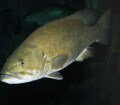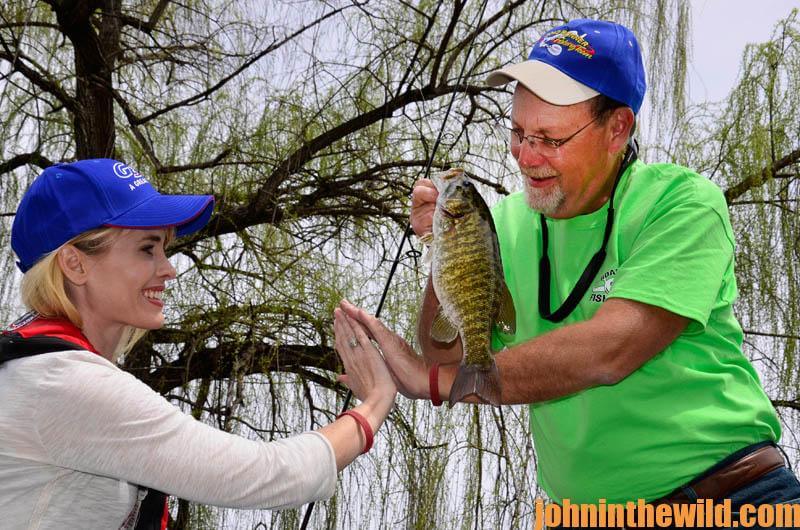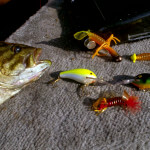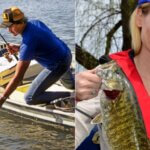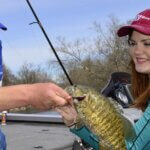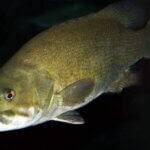John’s Note: The night was sultry, the moon had refused to shine, and the summertime air needed air conditioning. We had been chunking and winding since way before dark. Although we had caught quite a few largemouth bass, the real prize for which we were searching – the striped bronze tiger that prowls the stump rows and rocky bottoms of Pickwick Lake on the Tennessee/Mississippi/Alabama border – had eluded us. Summer is the prime time for catching smallmouths at night along the Tennessee River that meanders primarily through Tennessee and Alabama. And, Austin James of Athens, Alabama, knows how to catch them.
The baits Austin James prefers for smallmouth fishing are single-spin spinner baits.
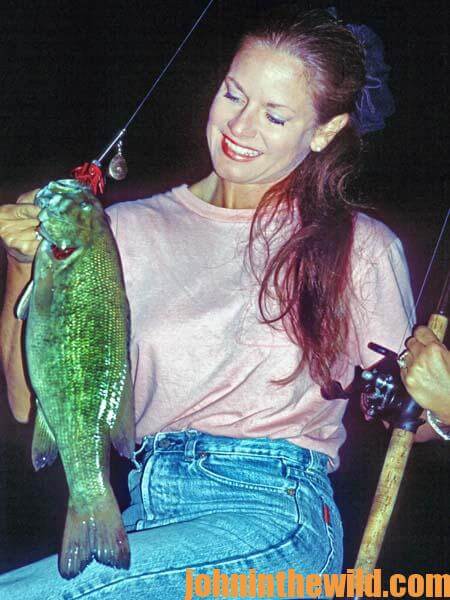 “I like a #4 Colorado blade,” James mentioned. “But I can’t tell that the blade color makes any difference with the numbers of smallmouths you catch at night. My favorite color of skirt and trailer is a purple-and-red skirt with a purple Uncle Josh pork frog trailer. Another color combination that I’ve had success with is a green-and-yellow skirt on a spinner bait with a green pork frog trailer. Ninety-five percent of the time the smallmouths either will hit a light-colored spinner bait like the green-and-yellow combination or a dark-colored spinner bait similar to the purple and red.”
“I like a #4 Colorado blade,” James mentioned. “But I can’t tell that the blade color makes any difference with the numbers of smallmouths you catch at night. My favorite color of skirt and trailer is a purple-and-red skirt with a purple Uncle Josh pork frog trailer. Another color combination that I’ve had success with is a green-and-yellow skirt on a spinner bait with a green pork frog trailer. Ninety-five percent of the time the smallmouths either will hit a light-colored spinner bait like the green-and-yellow combination or a dark-colored spinner bait similar to the purple and red.”
Unlike most smallmouth anglers, James doesn’t merely chunk and wind the spinner bait. He uses many finesse tactics to give his bait a more lifelike action. James has the ability to mentally see what the bait is doing as it’s retrieved along the stumpy bottom, which means he’s never mentally or physically out of contact with his lure.
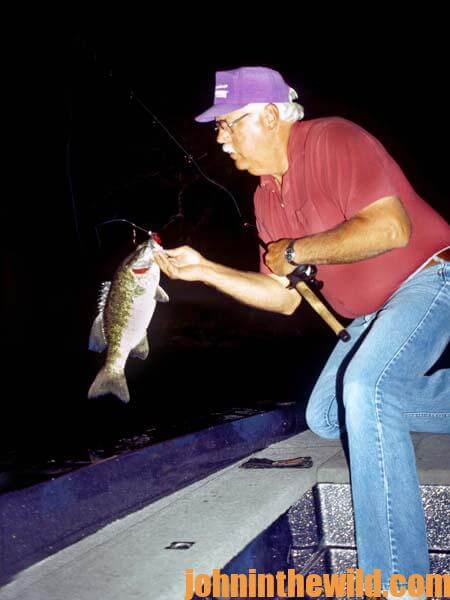 “I work a spinner bait just like I fish a plastic worm – very slowly,” James commented. “If the lure hits a stump, I lift my rod tip to pull the bait over the stump, lower my rod tip and then pause to let the bait fall. Most of the strikes come as the bait’s falling over the stump. I believe that crashing a spinner bait into a stump gets the fish’s attention. Then when the lure comes back to life and runs over the top of the stump, the fish sees it. As I ‘kill’ the bait’s action, usually the smallmouth attacks the lure. If the bass doesn’t hit when the bait’s falling, I’ll allow the lure to hit the bottom, start my retrieve again until my spinner bait crashes into another stump and then repeat my crash, lift and drop tactic.”
“I work a spinner bait just like I fish a plastic worm – very slowly,” James commented. “If the lure hits a stump, I lift my rod tip to pull the bait over the stump, lower my rod tip and then pause to let the bait fall. Most of the strikes come as the bait’s falling over the stump. I believe that crashing a spinner bait into a stump gets the fish’s attention. Then when the lure comes back to life and runs over the top of the stump, the fish sees it. As I ‘kill’ the bait’s action, usually the smallmouth attacks the lure. If the bass doesn’t hit when the bait’s falling, I’ll allow the lure to hit the bottom, start my retrieve again until my spinner bait crashes into another stump and then repeat my crash, lift and drop tactic.”
Although the smallmouths are in the Tennessee River during the daytime, they are much harder to take in the hot months. During daylight hours, the Wheeler and Wilson dam hydroelectric plants are running, which means more current. Getting baits down deep in that current to the smallmouths is a problem. But at night when the power plants shut down, and the smallmouths move into the shallows to feed, James has found that the fish are much more accessible and far easier to catch.
 James’ tackle is heavier than what most smallmouth fishermen utilize as he reported that, “I use a 6X Lamiglas rod to fish a spinner bait on 20-pound-test line. For reels I prefer the slower gear ratio reels like a 3:1 cranking, because smallmouth at night want slow-moving targets that are easy to catch and eat. If you’re burning that bait through the water, then you’ll fish over the smallmouths, and they’ll never hit the lures. The disadvantage to using a slower gear-ratio reel is when a smallmouth takes the bait and heads for deep water – usually toward the boat. Then the angler must reel very fast and smoke the reel to take up the line and stay in contact with the fish.”
James’ tackle is heavier than what most smallmouth fishermen utilize as he reported that, “I use a 6X Lamiglas rod to fish a spinner bait on 20-pound-test line. For reels I prefer the slower gear ratio reels like a 3:1 cranking, because smallmouth at night want slow-moving targets that are easy to catch and eat. If you’re burning that bait through the water, then you’ll fish over the smallmouths, and they’ll never hit the lures. The disadvantage to using a slower gear-ratio reel is when a smallmouth takes the bait and heads for deep water – usually toward the boat. Then the angler must reel very fast and smoke the reel to take up the line and stay in contact with the fish.”
To learn more about John E. Phillips’ bass fishing books in both Kindle eBooks and print books, click here.

